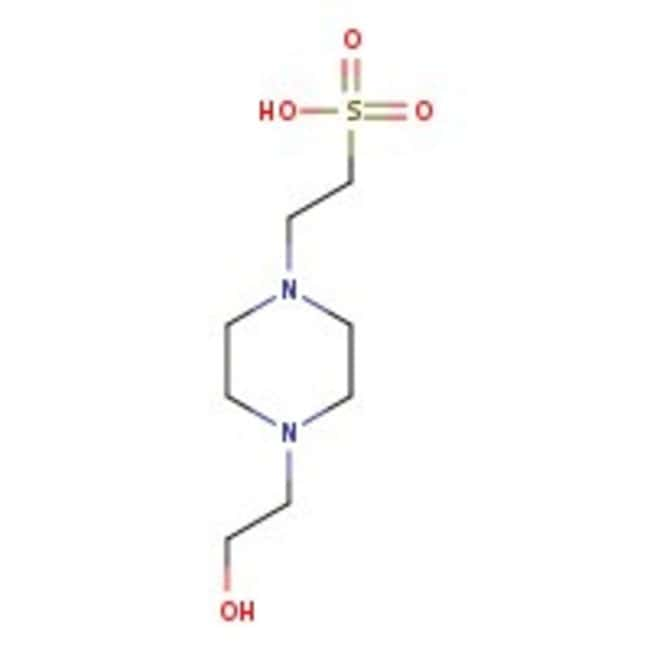Search Thermo Fisher Scientific
Thermo Scientific Chemicals
HEPES, solution tampon de 1,0M, pH 7,0
Référence: J62688.AK
250 mL, Each



Thermo Scientific Chemicals
HEPES, solution tampon de 1,0M, pH 7,0
Référence: J62688.AK
250 mL, Each
Quantité
Référence: J62688.AK
également connu sous le numéro J62688-AK
Prix (EUR)
115,20 Prix en ligne
128,00
Each
Quantité
-
Identifiants chimiques
CAS
7365-45-9
IUPAC Name
2-[4-(2-hydroxyethyl)piperazin-1-yl]ethane-1-sulfonic acid
Molecular Formula
C8H18N2O4S
InChI Key
JKMHFZQWWAIEOD-UHFFFAOYSA-N
SMILES
OCCN1CCN(CCS(O)(=O)=O)CC1
Spécifications
Appearance (Color)
Clear colorless
Composition
HEPES: 1 M
Comment
Component is dissolved in UV treated 18.2 megohm-cm ± 1 water, followed by pH adjustment and filtered through 0.22 micron filter.
Composition
Sodium Hydroxide: For pH adjustment
pH
7.0 ± 0.2
Description
HEPES is common buffer for biological sciences, particularly used in cell culture to maintain physiological pH. It acts a buffering component, which is used in the preparation of buffers. It is described as one of the best all-purpose buffers available for use in biological research.
This Thermo Scientific Chemicals brand product was originally part of the Alfa Aesar product portfolio. Some documentation and label information may refer to the legacy brand. The original Alfa Aesar product / item code or SKU reference has not changed as a part of the brand transition to Thermo Scientific Chemicals.
Applications
HEPES est un tampon commun pour les sciences biologiques, particulièrement utilisé dans la culture cellulaire pour maintenir le pH physiologique. Il agit comme un tampon qui est utilisé dans la préparation des tampons. Il est décrit comme l’un des meilleurs tampons polyvalents disponibles pour l’utilisation dans la recherche biologique.
Solubilité
Miscible à l’eau.
Remarques
Incompatible avec les agents oxydants forts.
HEPES est un tampon commun pour les sciences biologiques, particulièrement utilisé dans la culture cellulaire pour maintenir le pH physiologique. Il agit comme un tampon qui est utilisé dans la préparation des tampons. Il est décrit comme l’un des meilleurs tampons polyvalents disponibles pour l’utilisation dans la recherche biologique.
Solubilité
Miscible à l’eau.
Remarques
Incompatible avec les agents oxydants forts.
RUO – Research Use Only
Figures
Documentation et téléchargements
Certificats
Recherchez par numéro de lot ou numéro de lot partiel
Foire aux questions (FAQ)
Citations et références
Search citations by name, author, journal title or abstract text
Sécurité et manipulation
Not Hazardous
Not Hazardous